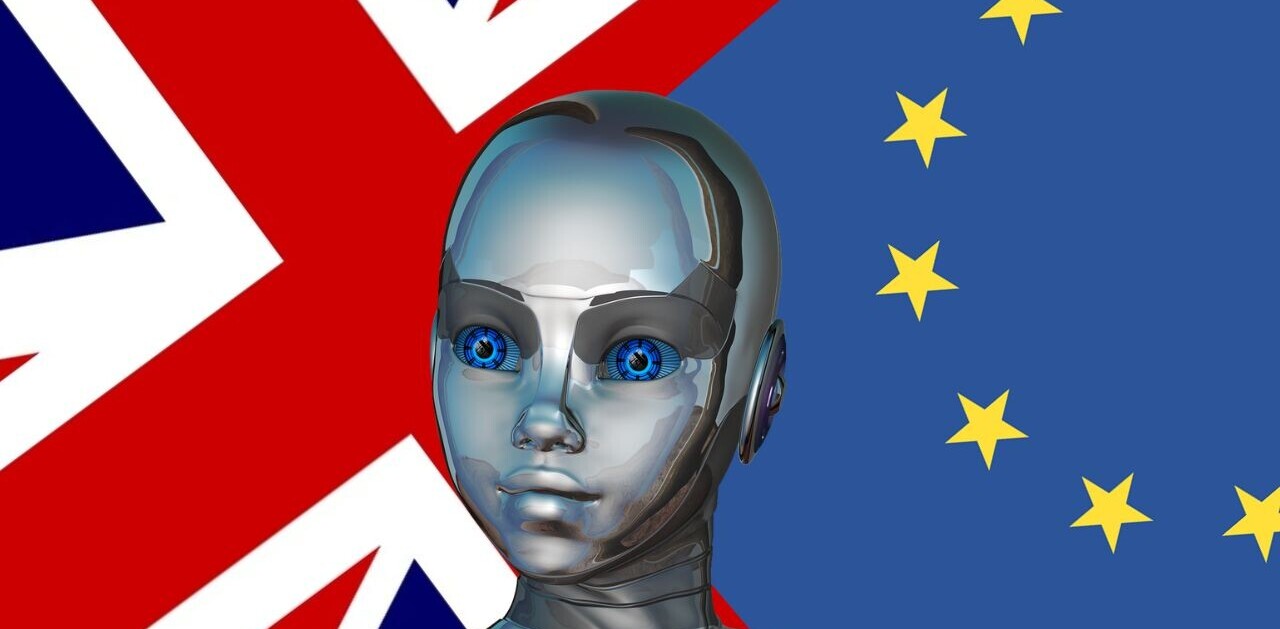So you’re interested in AI? Then join our online event, TNW2020, where you’ll hear how artificial intelligence is transforming industries and businesses.
Any business looking to streamline its processes and move to more efficient models will encounter automation, machine learning, and artificial intelligence along the way. Although in 2020 we’re a far cry from sentient machinery taking over, these buzzwords are currently hot property across every industry, from manufacturing to services. So it’s essential to understand these terms by definition and the way they interact.
Building the pyramids
Traditionally, there has been a pyramid model for technology with artificial intelligence (AI) sitting at the top. Below are the technological building blocks required as the platforms required for AI to function. Let’s first take at how this pyramid is formed.
Digitization
Starting from the bottom, the fundamental tech level is digitization. Without digitization, automation, machine learning, and ultimately AI aren’t even possible. Digitization is the process of conversion of non-digital, often analog data into digital storage. A spreadsheet is an example of digitized data, as are scanned images.
Instrumentation
The level of instrumentation is where data and technology begin to interact, and this is where businesses can sit up and take notice. At the instrumentation level, technology is used to observe or measure the digitized data as information moves between systems or individuals. However, the process merely works with the data it possesses already and doesn’t produce any new insights. A simplistic degree of automation is often already present in the instrumentation phase: simple heuristic rules are applied to route the data.
Analytics
When data science and mathematics begin to manipulate the digitized and instrumentalized data, the level of analytics is reached. Analytics permits meaningful insights to be gleaned from big data, allowing the data to lead businesses in a dynamic process of decision making.
Machine learning
Machine learning begins when programs begin taking analytics and applying it without explicit programming—the outcomes of machine learning are somewhat independent of its programming. At this level, machines are taking in data and analyzing it on their own, improving results in ways that exceed what an analytic model can provide. Machine learning means that algorithms are improving automatically through experience—essentially, the machines are learning as they go. This is an essential component of any model of artificial intelligence and has multiple applications in business and industry.
AI
The holy grail of sci-fi technology. AI replicates human thinking. Part of the model for AI necessitates machine learning. Broadly conceived, however, AI transcends machine learning by producing human capabilities such as visual processing and language comprehension.
AI and automation
AI and automation cannot be mistaken for the same thing—where there’s automation, there is no requirement that artificial intelligence is involved. Indeed, automation has been around for centuries, far longer than we’ve had computers: traditional milling used water wheels to automate manual processes that human labor would otherwise have been required for. Water spins the wheel, which turns the millstone—an automated process that’s decidedly unintelligent. Simple automation has been the cornerstone of many businesses for years. For example, a process of sending out invoices may be automated once inputs into spreadsheets have been confirmed by people in the accounts department.
Automation means that machines are replicating human tasks. But AI demands that the machines are also replicating human thinking. This means programming that can reflect on its own procedures and make decisions outside the scope of its own programming.
Can machine learning be automated?
Ultimately, machine learning requires a machine to react dynamically to changing variables. This is a fundamentally different objective to automation, which is essentially about teaching machines to perform repetitive tasks with predictable inputs. For this reason, applying machine learning to any automated process may be a case of overengineering. Machine learning is better suited in its applications to processes where the inputs are unpredictable, and the machine needs to respond on the fly.
However, machine learning could act as a safeguard in automated systems. Dealing with predictable inputs and gathering data on these inputs, a system informed by machine learning could act independently to flag up inputs that don’t correspond within the variables it’s set to compute.
The difference
Ultimately, machine learning can incorporate elements of automation but the ability to respond dynamically to changing inputs makes machine learning overkill for many processes that can be automated. As technological advancements make machine learning processes easier to create, it’s possible that machine learning could act as a failsafe in automated procedures. For the time being, machine learning remains suited to a niche of industry practices and automation remains likely to be the dominant principle in the application of technology to business.
This article was originally published by Vanessa Kearney on TechTalks, a publication that examines trends in technology, how they affect the way we live and do business, and the problems they solve. But we also discuss the evil side of technology, the darker implications of new tech and what we need to look out for. You can read the original article here.
Get the TNW newsletter
Get the most important tech news in your inbox each week.





